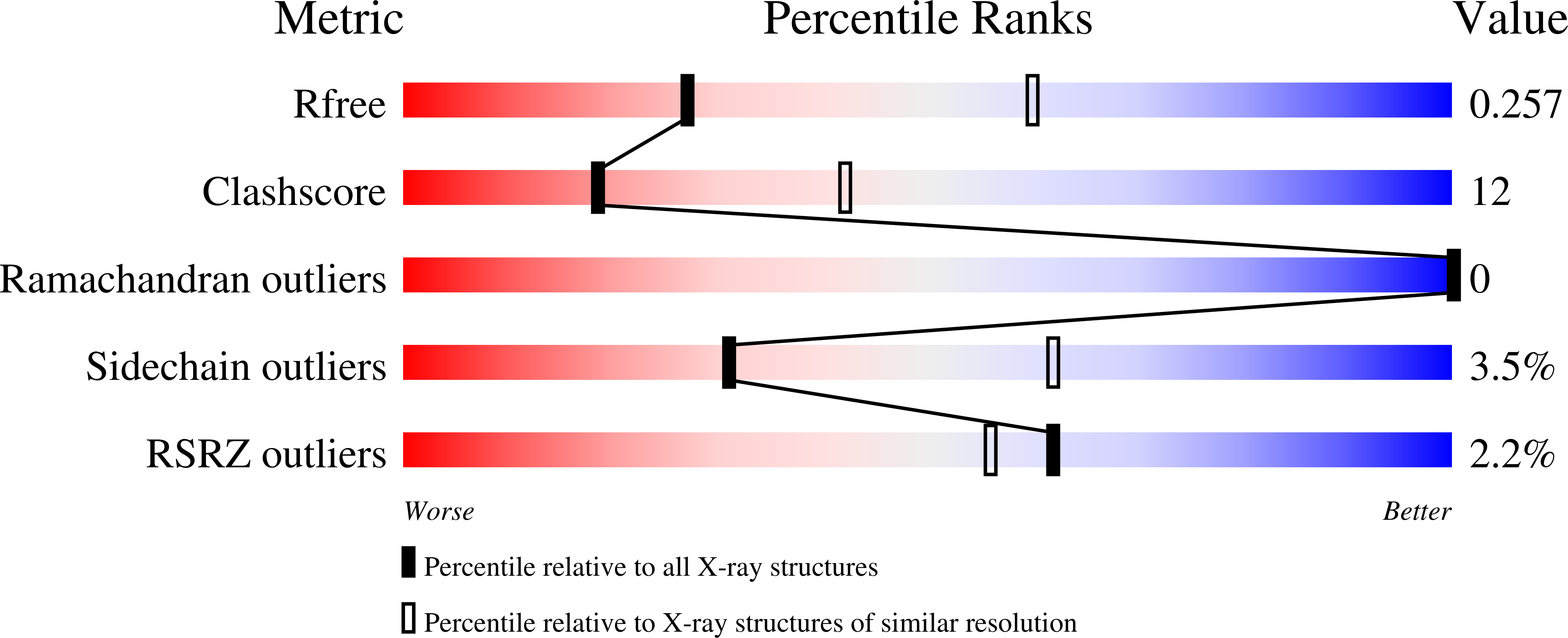
Deposition Date
2024-09-18
Release Date
2024-12-25
Last Version Date
2025-01-08
Entry Detail
PDB ID:
9GTV
Keywords:
Title:
Crystal structure of RamR with Tyr59 replaced with para-boronophenylalanine (boronate form)
Biological Source:
Source Organism:
Host Organism:
Method Details:
Experimental Method:
Resolution:
2.78 Å
R-Value Free:
0.25
R-Value Work:
0.21
R-Value Observed:
0.21
Space Group:
P 1 21 1


